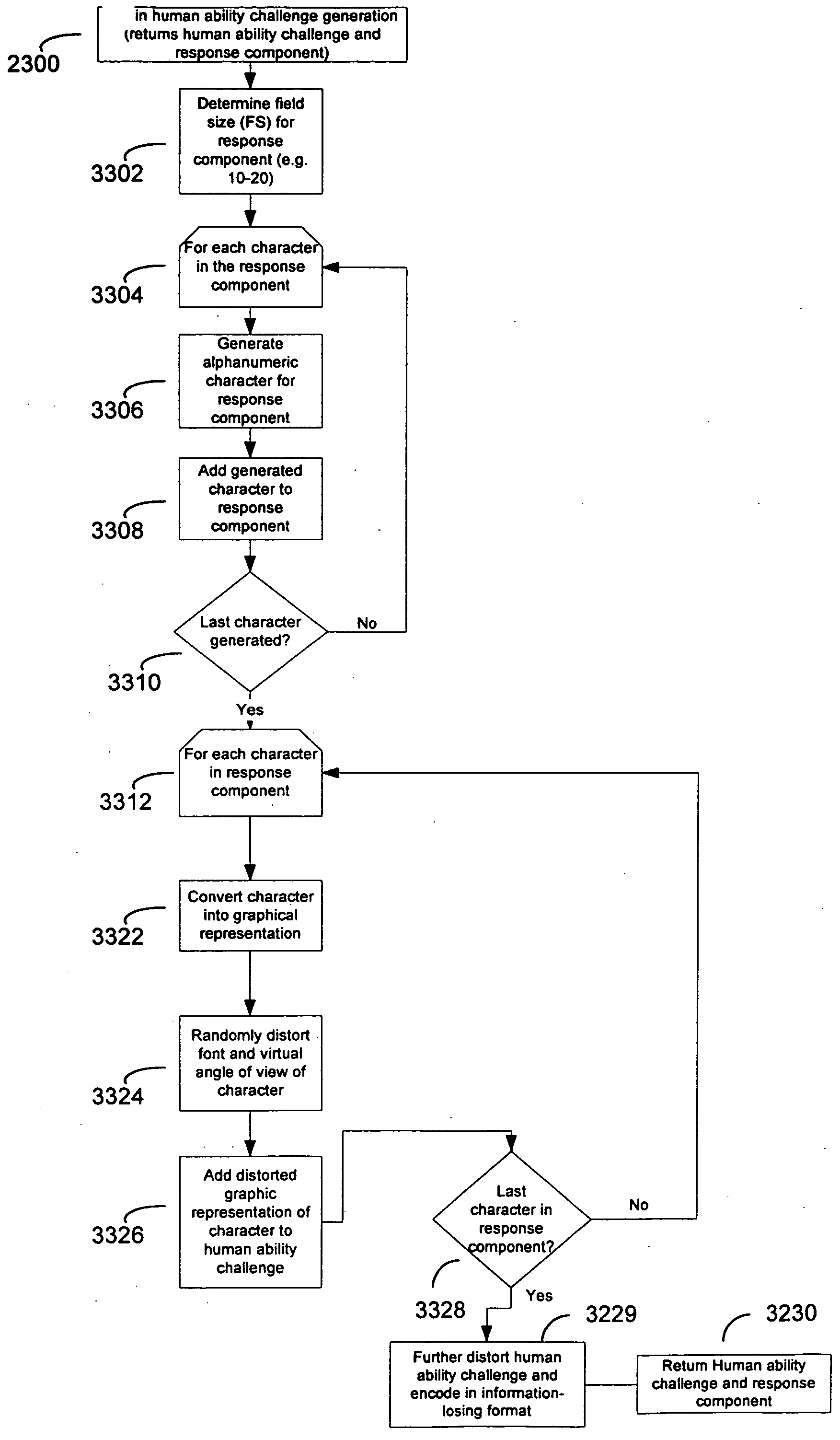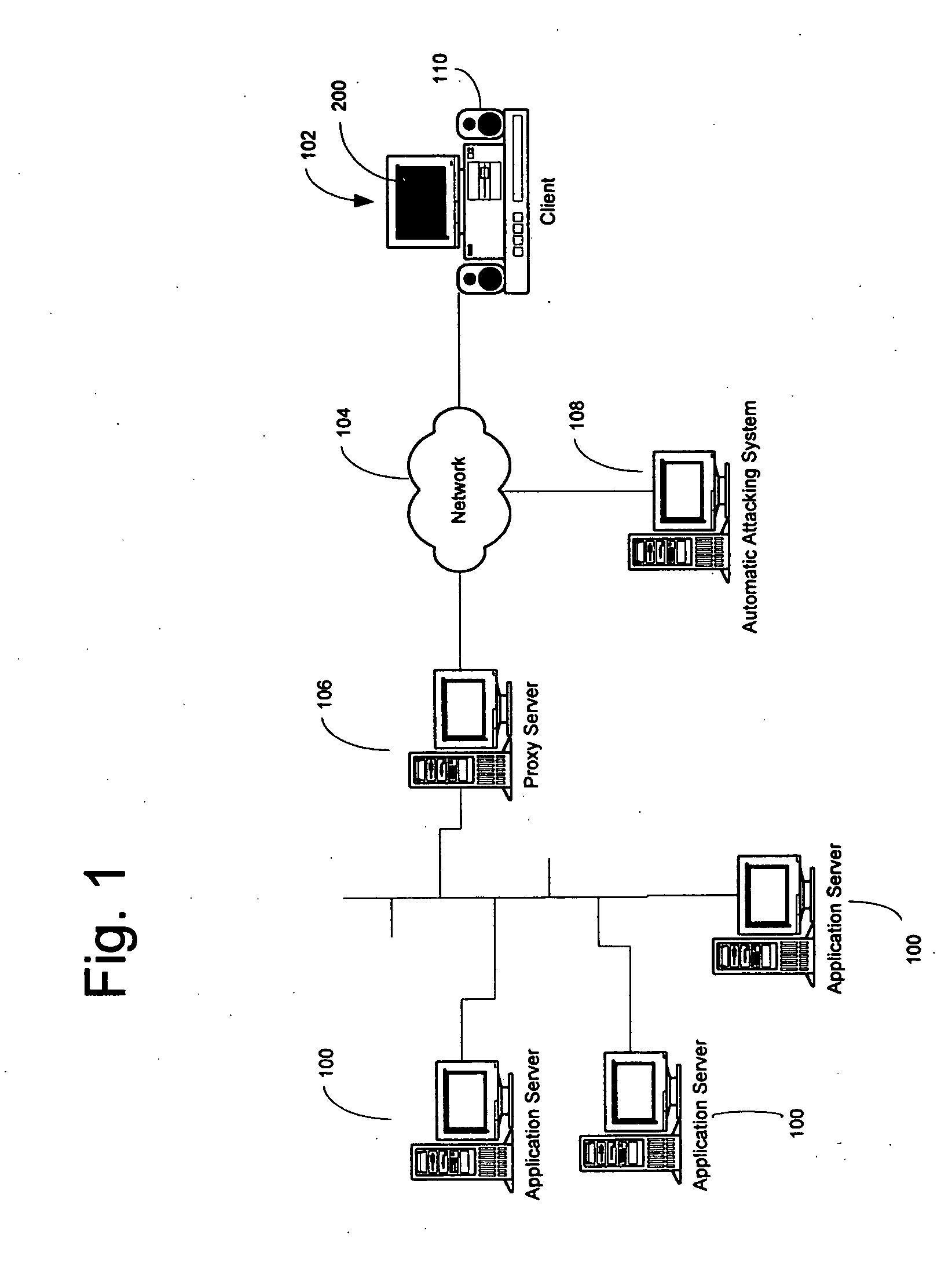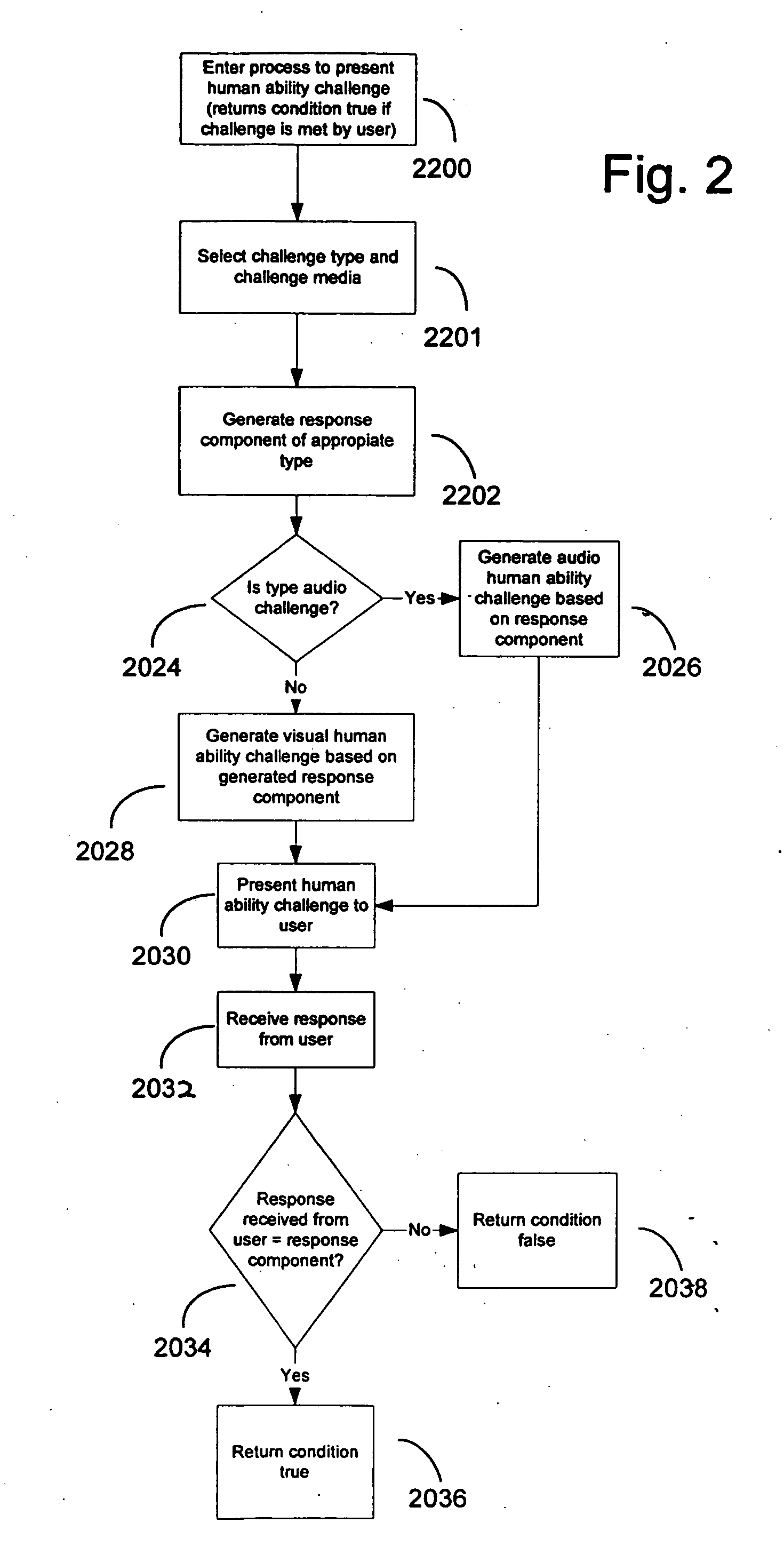Method and system for discriminating a human action from a computerized action
- Summary
- Abstract
- Description
- Claims
- Application Information
AI Technical Summary
Benefits of technology
Problems solved by technology
Method used
Image
Examples
Embodiment Construction
[0050] The preferred embodiments of the invention are now described with reference to the drawings in the figures.
[0051] With reference to FIG. 1, a diagram representing an architecture of systems of some embodiments of the present invention is shown based on a proxy mediator in a client / server model. Although this architecture is used for much of the description that follows, one skilled in the art will recognize that many different computer architectures may be used to present the human ability challenge, including a single computer running an application program with a built-in human ability challenge routine or a proxy human ability challenge routine.
[0052] As shown in FIG. 1, an application server 100 provides computer resources to users who access the system through a client 102. Client 102 includes UI (user interface) means such as a screen 200 and an audio component 110. The client communicates with the server through a network 104 which may comprise a local area network, ...
PUM
 Login to View More
Login to View More Abstract
Description
Claims
Application Information
 Login to View More
Login to View More - R&D
- Intellectual Property
- Life Sciences
- Materials
- Tech Scout
- Unparalleled Data Quality
- Higher Quality Content
- 60% Fewer Hallucinations
Browse by: Latest US Patents, China's latest patents, Technical Efficacy Thesaurus, Application Domain, Technology Topic, Popular Technical Reports.
© 2025 PatSnap. All rights reserved.Legal|Privacy policy|Modern Slavery Act Transparency Statement|Sitemap|About US| Contact US: help@patsnap.com



